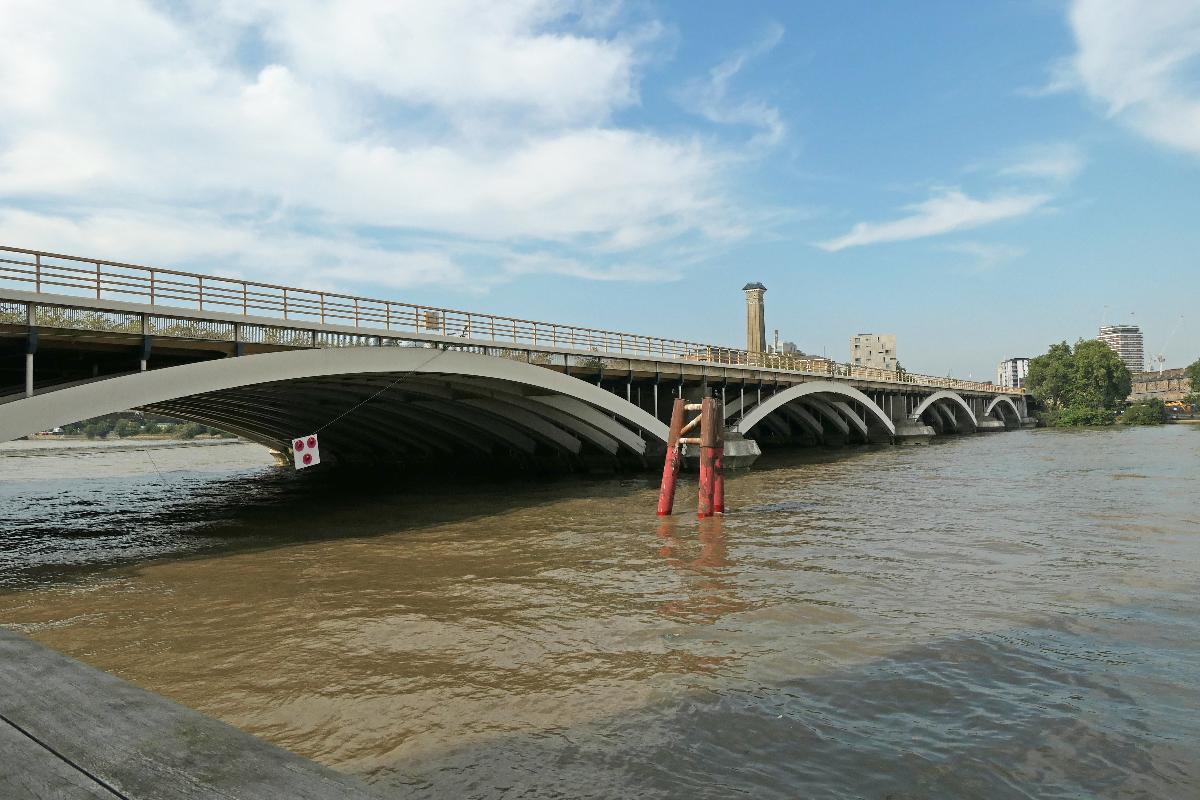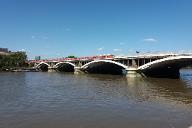Grosvenor Bridge
The original bridge was constructed in the mid-nineteenth century in two stages: the first bridge was built by the Victoria Station and Pimlico Railway between 1859 and 1860 at a cost of £84,000 to carry two tracks into Victoria Station; it was the first railway bridge across the Thames in central London. The engineer was Sir John Fowler. The bridge was widened by four tracks on the eastern side for the London, Brighton and South Coast Railway and London, Chatham and Dover Railway between 1865 and 1866, at a cost of £245,000. Sir Charles Fox was the engineer. In 1907 the bridge was widened again with a further track, on the western side, for the London, Brighton and South Coast Railway. In 1963–67, the structure of the bridge was completely renewed and modernized, leaving only the cores of the original piers. At the same time, a tenth track was added in a space formerly used for gas mains. To minimize disruption to traffic, each track was renewed separately, and put back into service before the next one was closed. The designer for this work was Freeman Fox & Partners, and the project engineer was A. H. Cantrell, chief civil engineer of the Southern Region of British Rail. It was said to be the busiest railway bridge in the world with 1000 trains crossing per day in 1968.
|
More media of this structure |
||||||||||||||||


